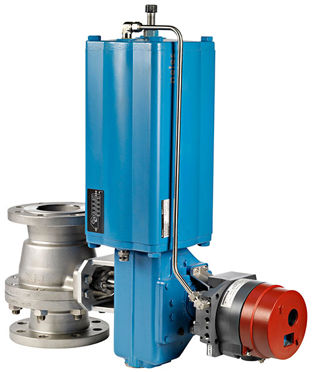How to select an ESD valve?
For us, re-inventing reliability is a critical mission that impacts technology and product development. The above concept is also reflected in ESD-valves and how these should be selected.

Ville Kähkonen, Head of Industry, Power to X and Gases at Valmet, has done presentations on emergency shutdown valves before. Initially, he focused on the valve selection process, which is critical to preventing future issues with ESD-valves in the field. The most crucial step in choosing an ESD valve is to use the application-based valve selection process, he says. “Correct ESD valve selection needs to consider valve type, pressure class, temperature, materials, and other application details. If the valve does not match the application in question, systematic valve failures will occur.”
Correct ESD valve selection needs to consider valve type, pressure class, temperature, materials, and other application details. If the emergency shutdown valve does not match the application in question, systematic valve failures will occur.”
Back to the maintenance aspect; there have been several discussions and presentations about ESD valves but mainly concentrating on safety integrity levels (SIL).
“The maintenance of the ESD valve has not been a very popular topic even it has a major impact on the final element reliability”, Mr. Kähkonen says. “Maintenance and testing are also critical to keep the final element in the condition so that it fulfills the original safety requirements specification (SRS) and required safety integrity level.”
Focus on the ‘troublesome 10’ of your ESD valves
So, the maintenance of ESD-valves is essential. However, in the case of schedule-based testing and maintenance, this leads often to unnecessary maintenance: time and money that could have been spent on other activities. According to Mr. Kähkonen, there are scenarios where a more predictive approach to maintenance would be better. “Let’s take an example. If 10 percent of all ESD-valves is causing you problems, focus on the ‘troublesome 10’. I know from practice that scheduled maintenance is common.
However, it is not suited to address systematic errors, for example, a wrong selection leading to corrosion and subsequent valve failure. As opposed to control valves, though, it is not as easy to monitor and test an ESD-valve. Regular (monthly) testing should work. However, in practice, these testing procedures (full stroke) would disrupt production.”
Not install-and-forget your emergency shutdown valves
Mr. Kähkonen states that PFD-calculations can be used to determine the optimal testing intervals and that partial stroke testing can be used to extend the proof test period and give valuable information for predictive maintenance. “Diagnostics and partial stoke testing should work to gauge the status of the valve and plan future maintenance. When the maintenance commences, the troublesome valves can be addressed first and also test the rest of the course. But don’t leave the troubling valves to the last minute to address the troublesome valves first because you want to order possible spare parts on time.”
ESD valves should not be treated as install-and-forget devices. Final elements have a crucial role in safety.
To conclude, Mr. Kähkonen stresses that ESD valves should not be treated as install-and-forget devices. “Final elements have a crucial role in safety. Therefore, they must be treated with care in the operational phase of the lifecycle. From a lifetime point of view, the ESD valve spends the longest period in the operation phase. IEC 61511-1 2016 requires SIS to be operated and maintained in a way that sustains the required safety integrity (IEC 61511 16.1). When safety integrity levels (SIL) and testing intervals are defined, and PFD-values are calculated, it is important to hold on to these testing periods and make sure the final elements are capable of working in case of emergency.”
Text by Lucien Joppen, Editor in chief Valve World. This article was originally published as ‘Neles: re-inventing reliability: ESD selection’ in Valve World magazine, May 2021 issue.
The text has been updated in April 2022, due to the company name change to Valmet.

Subscribe to our newsletter
Subscribe now to flow control newsletter and receive the latest insights directly to your email.
SubscribeRead more about ESD valves



